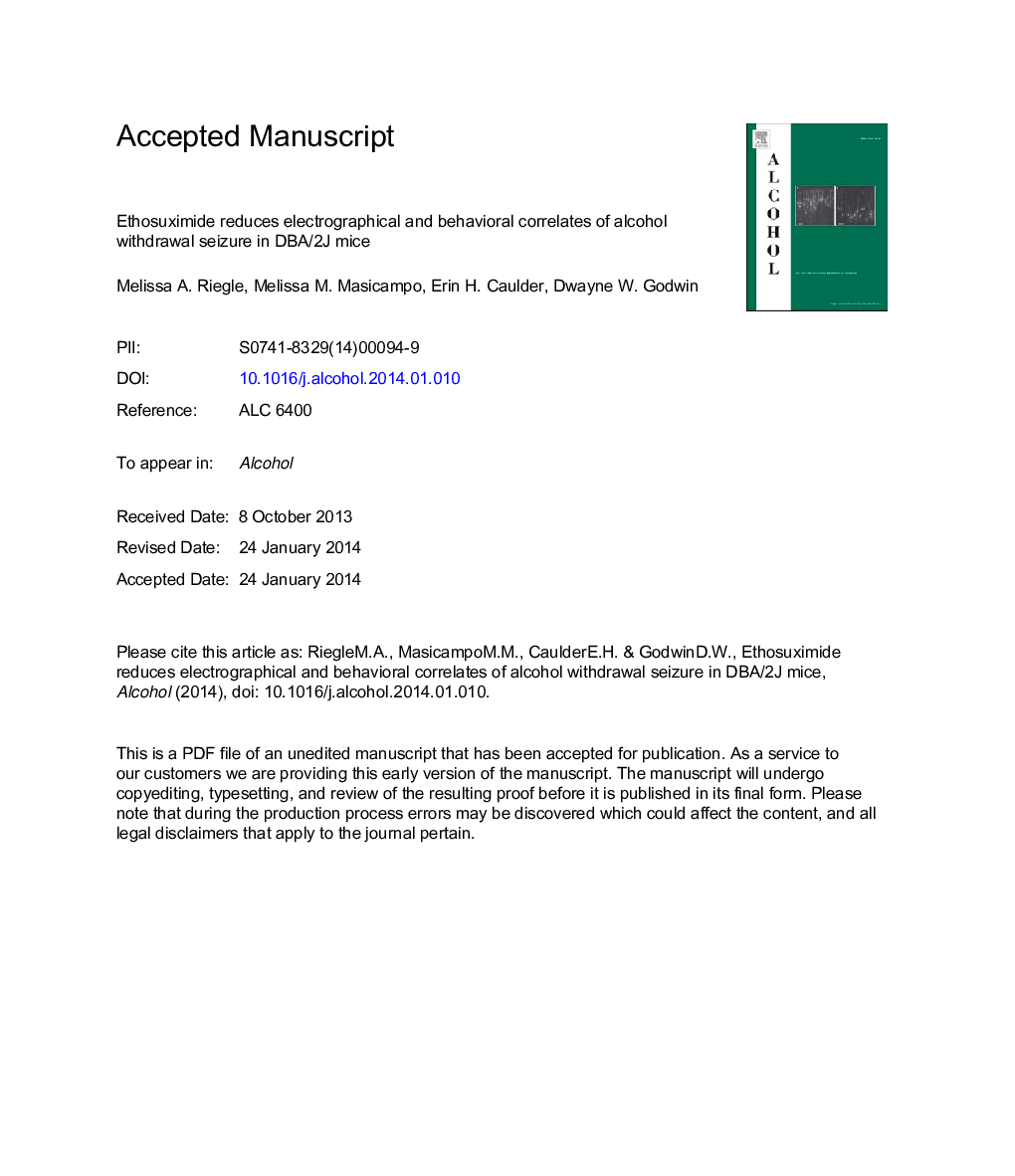| Article ID | Journal | Published Year | Pages | File Type |
|---|---|---|---|---|
| 10508968 | Alcohol | 2014 | 32 Pages |
Abstract
Chronic alcohol abuse depresses the nervous system and, upon cessation, rebound hyperexcitability can result in withdrawal seizure. Withdrawal symptoms, including seizures, may drive individuals to relapse, thus representing a significant barrier to recovery. Our lab previously identified an upregulation of the thalamic T-type calcium (T channel) isoform CaV3.2 as a potential contributor to the generation and propagation of seizures in a model of withdrawal. In the present study, we examined whether ethosuximide (ETX), a T-channel antagonist, could decrease the severity of ethanol withdrawal seizures by evaluating electrographical and behavioral correlates of seizure activity. DBA/2J mice were exposed to an intermittent ethanol exposure paradigm. Mice were treated with saline or ETX in each withdrawal period, and cortical EEG activity was recorded to determine seizure severity. We observed a progression in seizure activity with each successive withdrawal period. Treatment with ETX reduced ethanol withdrawal-induced spike and wave discharges (SWDs), in terms of absolute number, duration of events, and contribution to EEG power in the 6-10Â Hz frequency range. We also evaluated the effects of ETX on handling-induced convulsions. Overall, we observed a decrease in handling-induced convulsion severity in mice treated with ETX. Our findings suggest that ETX may be a useful pharmacological agent for studies of alcohol withdrawal and treatment of resulting seizures.
Related Topics
Life Sciences
Biochemistry, Genetics and Molecular Biology
Biochemistry
Authors
Melissa A. Riegle, Melissa L. Masicampo, Erin H. Caulder, Dwayne W. Godwin,
